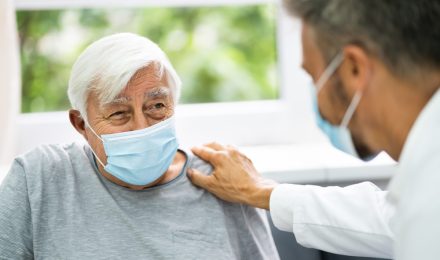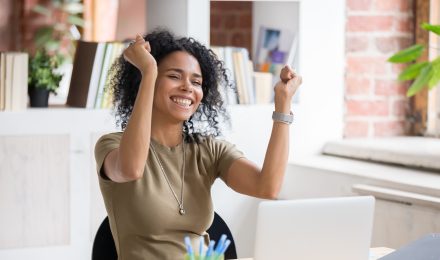Contents
It is no secret that the cost of food is on the rise. American families today are spending more than ever just to keep food on the table, and grocery costs have reached a level that has seen many facing tough times.

It’s not all doom and gloom, though. The government recognizes that there is a rising need for food assistance, and help is available for those who need it. In fact, food support networks have been around since 1939, when the first grocery assistance program was launched in the wake of the Great Depression and two world wars. [1] And fortunately, it’s easier than ever before to take part.
The Supplemental Nutrition Assistance Program (SNAP) has transformed over the years, adapting to meet the needs of millions. Its most significant reinvention came in 2008, when it evolved from the food stamp program into the SNAP initiative we recognize today, bringing modern solutions to the enduring challenge of food insecurity.
SNAP – One of the New Low-Cost Food Programs
You’ve probably heard the term “food stamps,” a phrase long used to describe government assistance for groceries. But have you heard of SNAP?
SNAP, or the Supplemental Nutrition Assistance Program, is the modern tool designed to help Americans in need access nutritious food. Administered by the U.S. Department of Agriculture (USDA) and the Food and Nutrition Service (FNS), this federal aid program operates with state-level distribution, allowing for slight variations depending on location.
One of SNAP’s greatest strengths is its reach. It doesn’t just help those grappling with food insecurity; it’s also easy to use, widely available, and structured to support countless individuals seeking access to affordable, healthy food.
SNAP Eligibility – Who Can Apply?
Eligibility requirements for SNAP are straightforward: applicants must be residents of a U.S. state and meet certain conditions, such as income thresholds and work stipulations. These regulations vary depending on your state of residence, making it essential to apply through your home state. To find detailed eligibility figures and application guidelines, visit www.fns.usda.gov/snap/state-directory.
Why Low-Cost Food Programs Are Effective
SNAP stands out due to the significant resources behind it. The government recognizes how essential this program is for its citizens and funds it accordingly. In 2018 alone, SNAP supported an estimated 40 million Americans, allocating more than $57 billion in aid. During the COVID-19 crisis, it was credited with lifting over 2 million people out of poverty.
In its early days, the program issued paper vouchers resembling dollar bills, which inspired the term “food stamps.” Today, SNAP operates using modern EBT (Electronic Benefit Transfer) cards. Each month, funds are deposited into an account linked to the card, allowing recipients to purchase groceries just as they would with a debit card.
While SNAP benefits provide considerable flexibility, they come with restrictions. Eligible products are limited to food items, and the amount provided depends on the household size. To find exact figures for your state, refer to the resources mentioned above. These advancements ensure that SNAP remains a vital, effective tool in the fight against food insecurity.

Foods That Are Available for Purchase Through SNAP
- • Produce like fruits and vegetables
- • Meat and other proteins like chicken, seafood and beef
- • Dairy and eggs
- • Breads, cereals and snacks
- • Beverages
Additionally, you can use your funds toward creating your own food garden, so seeds and plants also fall under this category.
Items That Are Prohibited with Low-Cost Food Programs
- • Alcohol
- • Tobacco
- • Hot prepared food
- • Prescription medicines and over the counter medicines
- • Pet foods
While you can purchase plants and seeds to grow your own food, you cannot purchase livestock for slaughter or chicken for raising eggs.
School Lunch
It’s good to note that Low-Cost Food Programs extend to school age children in need of a nutritious meal during school hours. An estimated 30 million children benefit from this program, which is called the Child Nutrition Program.
Sources
- [1] R42505 (congress.gov)
- [2] A Quick Guide to SNAP Eligibility and Benefits | Center on Budget and Policy Priorities (cbpp.org)
- [3] Exploring the Role of Equity in SNAP Modernization and Access (rwjf.org)
Contents
It is no secret that the cost of food is on the rise. American families today are spending more than ever just to keep food on the table, and grocery costs have reached a level that has seen many facing tough times.

It’s not all doom and gloom, though. The government recognizes that there is a rising need for food assistance, and help is available for those who need it. In fact, food support networks have been around since 1939, when the first grocery assistance program was launched in the wake of the Great Depression and two world wars. [1] And fortunately, it’s easier than ever before to take part.
The Supplemental Nutrition Assistance Program (SNAP) has transformed over the years, adapting to meet the needs of millions. Its most significant reinvention came in 2008, when it evolved from the food stamp program into the SNAP initiative we recognize today, bringing modern solutions to the enduring challenge of food insecurity.
SNAP – One of the New Low-Cost Food Programs
You’ve probably heard the term “food stamps,” a phrase long used to describe government assistance for groceries. But have you heard of SNAP?
SNAP, or the Supplemental Nutrition Assistance Program, is the modern tool designed to help Americans in need access nutritious food. Administered by the U.S. Department of Agriculture (USDA) and the Food and Nutrition Service (FNS), this federal aid program operates with state-level distribution, allowing for slight variations depending on location.
One of SNAP’s greatest strengths is its reach. It doesn’t just help those grappling with food insecurity; it’s also easy to use, widely available, and structured to support countless individuals seeking access to affordable, healthy food.
SNAP Eligibility – Who Can Apply?
Eligibility requirements for SNAP are straightforward: applicants must be residents of a U.S. state and meet certain conditions, such as income thresholds and work stipulations. These regulations vary depending on your state of residence, making it essential to apply through your home state. To find detailed eligibility figures and application guidelines, visit www.fns.usda.gov/snap/state-directory.
Why Low-Cost Food Programs Are Effective
SNAP stands out due to the significant resources behind it. The government recognizes how essential this program is for its citizens and funds it accordingly. In 2018 alone, SNAP supported an estimated 40 million Americans, allocating more than $57 billion in aid. During the COVID-19 crisis, it was credited with lifting over 2 million people out of poverty.
In its early days, the program issued paper vouchers resembling dollar bills, which inspired the term “food stamps.” Today, SNAP operates using modern EBT (Electronic Benefit Transfer) cards. Each month, funds are deposited into an account linked to the card, allowing recipients to purchase groceries just as they would with a debit card.
While SNAP benefits provide considerable flexibility, they come with restrictions. Eligible products are limited to food items, and the amount provided depends on the household size. To find exact figures for your state, refer to the resources mentioned above. These advancements ensure that SNAP remains a vital, effective tool in the fight against food insecurity.

Foods That Are Available for Purchase Through SNAP
- • Produce like fruits and vegetables
- • Meat and other proteins like chicken, seafood and beef
- • Dairy and eggs
- • Breads, cereals and snacks
- • Beverages
Additionally, you can use your funds toward creating your own food garden, so seeds and plants also fall under this category.
Items That Are Prohibited with Low-Cost Food Programs
- • Alcohol
- • Tobacco
- • Hot prepared food
- • Prescription medicines and over the counter medicines
- • Pet foods
While you can purchase plants and seeds to grow your own food, you cannot purchase livestock for slaughter or chicken for raising eggs.
School Lunch
It’s good to note that Low-Cost Food Programs extend to school age children in need of a nutritious meal during school hours. An estimated 30 million children benefit from this program, which is called the Child Nutrition Program.
Sources
- [1] R42505 (congress.gov)
- [2] A Quick Guide to SNAP Eligibility and Benefits | Center on Budget and Policy Priorities (cbpp.org)
- [3] Exploring the Role of Equity in SNAP Modernization and Access (rwjf.org)






